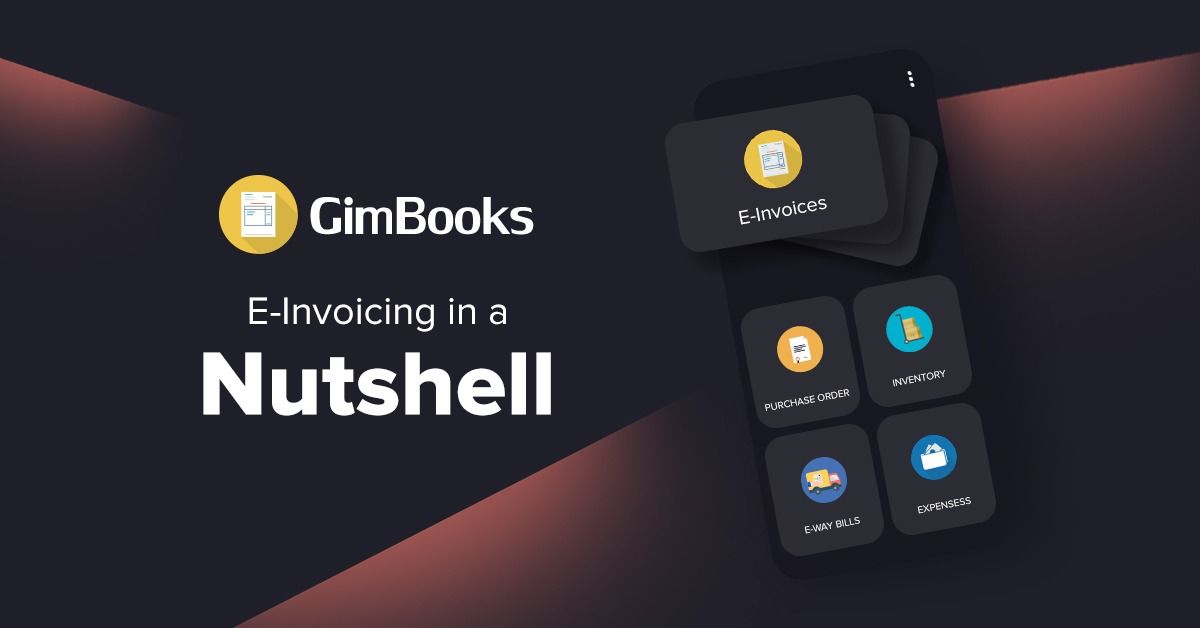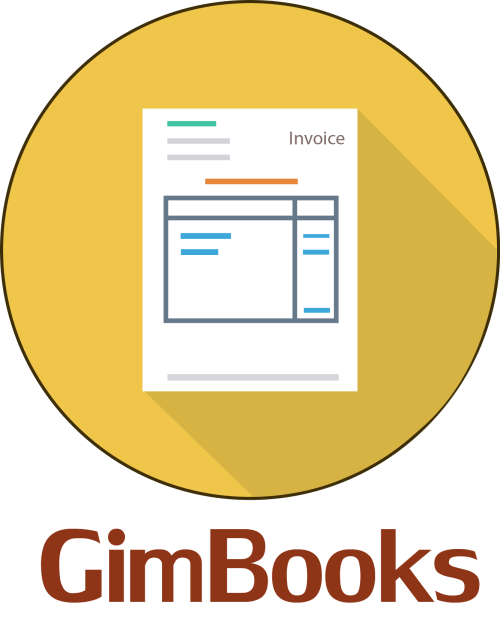E-invoicing in a Nutshell
‘e-Invoicing’ or ‘electronic invoicing’ is a system in which B2B invoices are authenticated electronically by GSTN for further use on the common GST portal.

Electronic invoice (e-invoice) automates and eliminates manual efforts of creating, sharing, and editing invoices between buyer and seller. This means that the invoice is created, sent, and received in standard electronic format. This saves time and helps buyers or sellers to automate their workings and invoices.
Introduction
Invoice is the first and most crucial step in the bookkeeping process. An invoice establishes an obligation for payment for products and services provided. Most organizations use accounting software for creating invoices and making online payments. Even though this process is done with the accounting software still, human intervention is required for the sharing of invoices.
Most of the organizations still follow conventional ways of paper invoices printing. Some companies share and follow up on invoices via email. Electronic invoicing (E-Invoicing) allows the sharing of invoices between a buyer and a seller in an electronic format. Electronic invoicing (E-Invoicing) automates and eliminates manual intervention in sending and sharing invoices.
Although some companies use E-invoicing as their invoicing methods, most of the companies are still unaware of its benefits.
This article looks into E-Invoicing, its benefits, and explains what the Indian government is doing to promote electronic invoicing (E-Invoicing) use in India.
In December 2019, the Indian tax authority, the Goods and Services Tax Council (GSTC), approved the phased implementation of B2B electronic invoicing through the Goods and Services Tax (GST) System. Following the voluntary adoption period, which began in January 2020, the implementation of the mandatory use of electronic invoices will begin in October 2020.
Companies will be required to adopt the system gradually according to their annual turnover. The first businesses required to adapt to the GST system are those with an annual turnover of rs500 crores or more. Exceptions include Special Economic Zones (SEZ), insurance companies, banks, overland transport agencies, passenger transport companies, and cinemas. The introduction of e-invoicing is yet another step toward the completion of the GST System project initiated by the government in 2017. It represents the most sweeping change made to the economy in the history of the Republic of India. The GST project, whose motto is “One Nation, One Tax, One Market”, is an ambitious plan. The objective is to integrate India into one common marketplace through the harmonization of the tax system.
What is an invoice?
An invoice is a document sent to a buyer that specifies the amount and cost of products or services that have been provided by a seller.
An invoice indicates what must be paid by the buyer according to the payment terms of the seller. Payment terms usually specify the period that a buyer has to send payment to the seller for the goods and/or services that they have purchased.
An invoice provides a detailed account of the products or service and a set of other information that can vary a bit depending on the requirements in the country the invoice is issued and the type of product or service being sold.
What is an E-invoice?
‘e-Invoicing’ or ‘electronic invoicing’ is a system in which B2B invoices are authenticated electronically by GSTN for further use on the common GST portal. Under the electronic invoicing system, an identification number will be issued against every invoice by the Invoice Registration Portal (IRP) to be managed by the GST Network (GSTN).
The first IRP was launched by the National Informatics Centre at https://einvoice1.gst.gov.in. All invoice information will be transferred from this portal to both the GST portal and e-way bill portal in real-time. Therefore, it will eliminate the need for manual data entry while filing GSTR-1 returns as well as generation of part-A of the e-way bills, as the information is passed directly by the IRP to the GST portal.
Why should businesses incorporate E-Invoicing?
Reduced Manual Work
- E-Invoicing allows easy creation and sharing of invoices in one standard electronic format.
- E-Invoicing significantly reduces the time and effort spent in exporting invoices, invoice verification, emailing invoices, manual data entry for bills.
Eliminates data entry errors
- E-Invoicing eliminates data entry errors made by finance staff.
- E-Invoicing allows sending invoice data in electronic format, which minimizes erroneous entries.
- E-Invoicing significantly decreases the time and effort spent in following-up and rectifying errors made in the process.
Save printing expense & go green with a paperless office
- E-Invoicing allows companies to save money in printing invoices.
- Send invoices in standard electronic format and eliminate hard-copies.
Faster payment cycle
- E-Invoicing reduces customer’s and supplier’s inquiries about invoices, which leads to speedy approval and faster payments.
- E-invoices allow for faster processing as less manual work is required to make an online payment for the invoice.
Improved Customer and Vendor Management
- Send and receive invoices from any buyer and seller on the internet network.
- Negotiate discounts for early payment of invoices
More Efficient Cash Flows
- E-Invoicing allows real-time visibility of the payment cycles, enabling more efficient cash flow management for your business.
- Better control of cash flow for forecasting and growth planning
What are the mandatory fields for an e-invoice?
Source - https://einvoice1.gst.gov.in
E-invoice must primarily adhere to the GST invoicing rules. Apart from this, it should also accommodate the invoicing system or policies followed by each industry or sector in India. Certain information is made mandatory whereas the rest of them is optional for businesses. Many fields are also made optional and users can choose to fill up relevant fields only. It has also described every field along with the sample inputs for the interested users. One can see that certain required fields from the e-way bill format are included now in the e-invoice such as the sub-supply type.
Below is the gist of the contents of the latest e-invoice format as notified on 30th July 2020 via Notification No.60/2020 - Central Tax.
- 12 Sections (mandatory + optional) and 6 annexures consisting of a total of 138 fields
- Out of the 12 Sections – 5 are Mandatory and 7 are Optional. Two annexures are mandatory.
- The 5 Mandatory sections are Basic Details, Supplier Information, Recipient Information, Invoice Item Details, and Document Total. The two mandatory annexures are details of the items and document total.
The following fields must be compulsorily be declared in an e-invoice:
Why is GimBooks a perfect E-invoicing app for you?
1. Create and share GST Invoices & E-waybills with customers
2. Manage and check your Inventory instantly
3. Manage and Track Purchase, Expenses, and Ledgers
4. Send Gentle Payment Reminders to Customers
5. Keep a live track of various business reports
6. Make your GST Filing simpler and faster
Download the Easy Invoice Manager App by GimBooks today and experience the simple, quick and convenient way of managing all of your accounting needs
